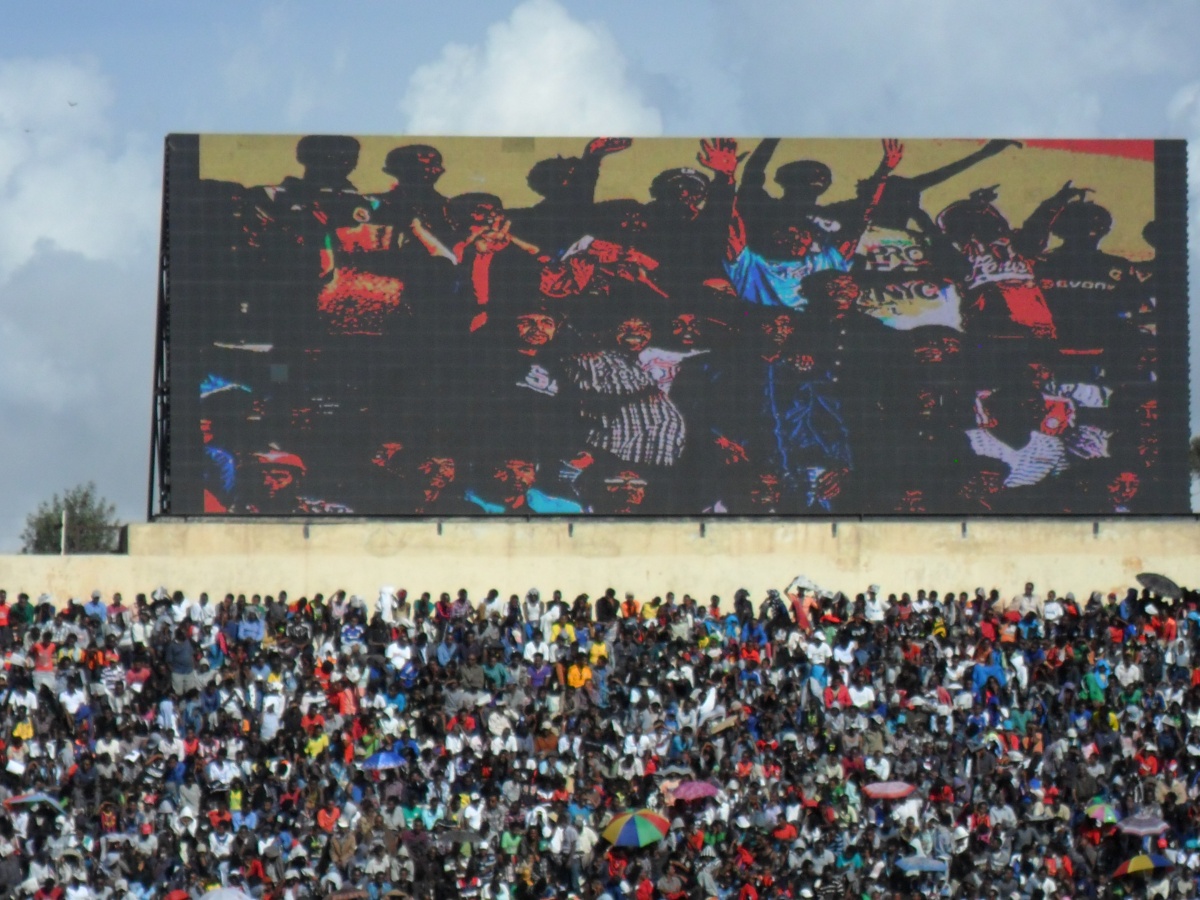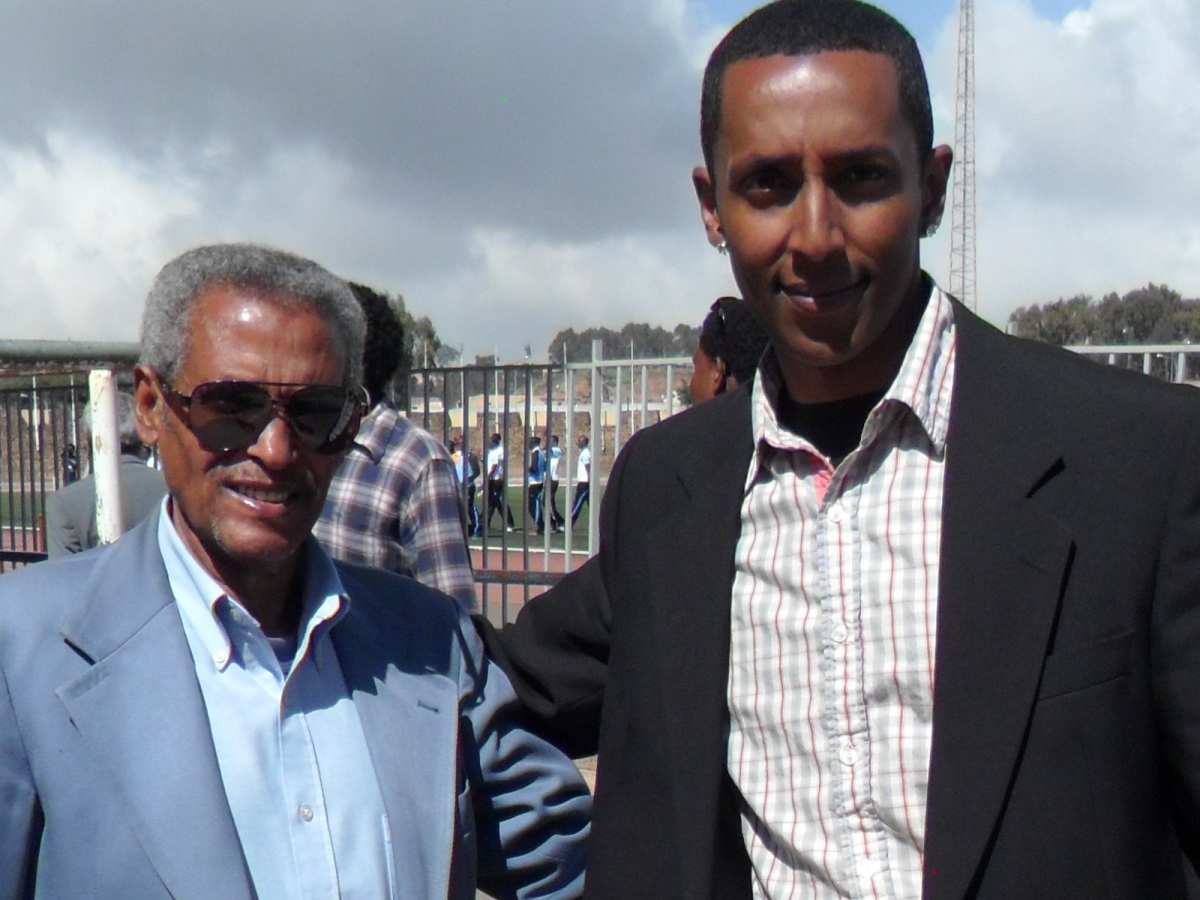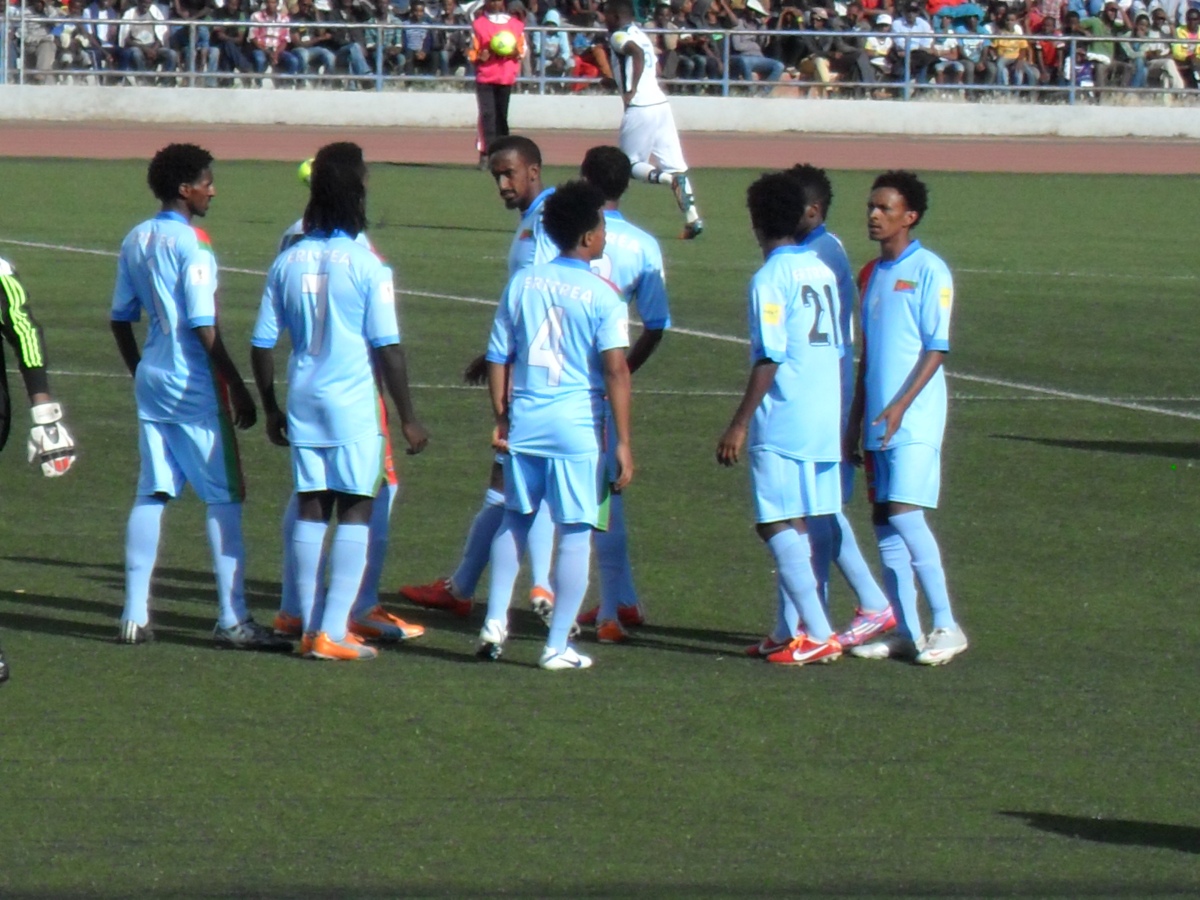This past Saturday, Botswana defeated Eritrea 2-0 at Asmara’s Cicero stadium in the first leg of FIFA World Cup pre-qualifying. Botswana scored a goal early in both halves to take a firm grip of the home and away series, with the return leg to take place in Botswana later this week.
Arriving at the stadium nearly three hours prior to kick-off, I was instantly positively struck by the loud, boisterous atmosphere. The stadium was already nearly full, local music and horns were blaring, a plethora of Eritrean flags were being waved enthusiastically, and the surrounding environs were buzzing with chatter full of excitement and anticipation. By kick-off, the stadium was completely packed, leading some eager fans without tickets to scale the high fences and perch themselves atop the elevated walls of the stadium (thus arousing memories of Barcelona fans – affectionately referred to as “los cules” – of a bygone era).
The Botswana team was well-organized and implemented their game plan effectively. The aim was to maintain a clean sheet (i.e. no goals conceded) and possibly nick a vital away goal. Botswana was generally strong in defence, tidy and conservative in midfield, and efficient in possession. Having scored relatively early in the match, they were able to continue with their stifling containment strategy and thus minimize any risks of an Eritrean reply.
The Botswana goalkeeper was calm and assured, looking particularly impressive and commanding when coming out to collect crosses or through passes, and he was constantly directing and organizing his defenders. In front of him, the players comprising the “spine” of the team were all very strong. Botswana’s rugged central defenders competed for and won many physical duels (i.e. tackles and headers), and they took few risks, often clearing the ball at the first sign of trouble or playing direct, diagonal passes for the attackers to chase. Botswana’s two central midfielders consistently offered their defenders help, frequently winning the vital “second ball” (thus regaining possession) and also tracking the potentially dangerous forward runs of Eritrean attackers or midfielders. Additionally, the midfielders made themselves available for passes from other players, often quickly receiving the ball and changing the direction of play. Although not an outstanding side, Botswana played to its strengths; the team was well-organized, minimized mistakes, was efficient in possession, and ultimately delivered a positive result.
For Eritrea, the two goal deficit means the team now faces a stern – yet not impossible – task to overturn the result in Botswana. While the stadium was full of anticipation, not enough Eritrean players performed well enough to offer the home team a great chance of winning the game. Botswana’s two goals both involved mistakes by the Eritreans. The first goal came off of a corner kick, with Botswana’s Galabgwe Moyana left completely unmarked in the box – a mistake of criminal proportions – to head the ball into a gaping goal. The second goal was from a speculative volley from distance by Joel Mogoros, which should have been challenged by a defender and with which the Eritrean goalkeeper, Haylegiorgis Gebregziabiher, could have done better with.
Although many performances were underwhelming, several Eritrean players positively stood out. After a slightly shaky start that saw several Botswana attacks on his flank, the right-sided defender Arefaine Gebregzhabhier performed well. He won a respectable share of tackles and headers, closely marked the Botswana winger, both received and played the ball confidently (often to the midfielders or strikers), and even ventured forward on several mazy dribbles. On the opposite flank, the left-sided defender Russom Andebrhan also showed some positive qualities.
In central defence, one of Eritrea’s foreign-based players, Senai Birhane, had a relatively strong, steady match. Although he committed several minor errors, he was generally quick to sense danger, frequently snuffing out promising Botswana attacks. As would be expected of a central defender, he was strong in the air and he won many tackles. Additionally, he was very calm with the ball at his feet, distributing it to the flanks effectively, and also playing several long diagonal passes for Eritrea’s attackers.
Eritrea’s gritty central midfielder, Tium Muruts, also had a commendable performance. One particular episode that was typical of his overall performance occurred after the 90th minute; Muruts chased down and tackled a Botswana defender deep within the Botswana half, even though the result appeared to be a foregone conclusion. Throughout the duration of the match, Muruts recovered many loose balls, was generally neat and tidy in possession, and was a nuisance to his opposite marker.
To have a realistic chance of progressing to the next round, it will be imperative for Eritrea to be more creative in crafting genuine goal-scoring opportunities. Although they did enjoy notable spells of possession and showcased some silky skills, many of Eritrea’s shots were from distance, rather than as a result of clear-cut openings. Part of the focus for the team must be ensuring that striker Henok Goitom is more involved. The Sweden-based striker was frequently left isolated upfront, seeing little service and infrequently linking up with the midfielders or other strikers. At times, passes to Goitom (or the other forwards) were hit more in desperation than with specific aims or direction, and it was notable that Goitom only had a few “half-chances” to score. In the second half, it was quite noticeable that Goitom began to drop deeper to collect the ball and spread the play. While this did see him increase his overall involvement and touches on the ball, it also meant that he ended up much farther away from where he is most dangerous – in the opposing team’s penalty box. As well, the team will need to vary its approach (for example, utilizing a mixture of both long and short passes to remain unpredictable) and possibly its personnel or formation (through adding an extra striker, such as the home-based goal-scorer Hailemichael Gebremichael, or including an extra creative influence in midfield).
Regardless of the final outcome against Botswana, it is encouraging to see Eritrea participating in such a significant, globally-renown competition. Furthermore, it is important to recall that although football in Eritrea has a long, rich history, Eritrea’s contemporary footballing tradition is still in its infancy. Many aspects of the team, its play, and decision making can and only will be improved through further investment, training, and competition. For example, several times throughout Saturday’s match, players failed to properly communicate or “read” each other, facets of the game which can only develop after a team has spent much time working closely together and developing understanding.
Recent weeks and months have showcased Eritrea’s pedigree in athletics and cycling, with the country’s athletes making history and breaking various records in several prestigious competitions. Eritrea’s proud footballers and passionate fans no doubt hope and expect that the “Red Sea Camels” will soon follow suit.



